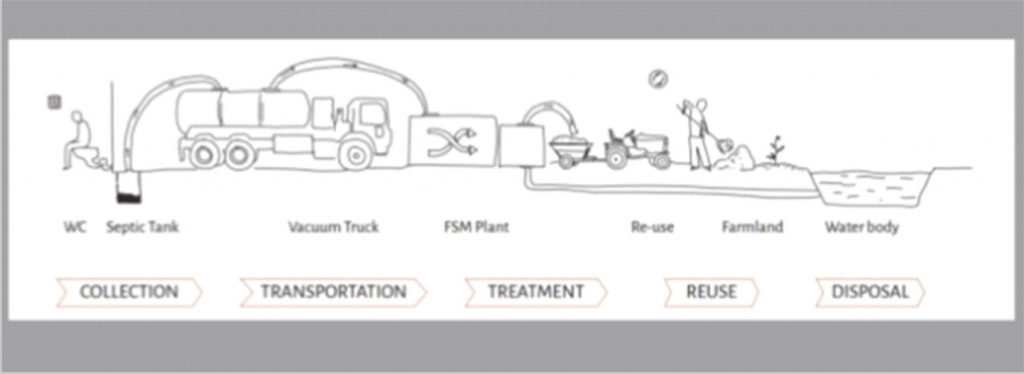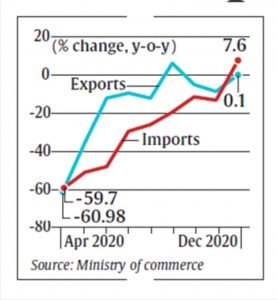The houbara
IN NEWS:
- UAE’s royal family members arrived in Panjgur district in Balochistan recently to hunt the internationally protected and vulnerable houbara bustard under a licence issued by the Pakistan Foreign Ministry to strengthen the country’s relations with Gulf nations. They kill the bird for sport and also because its meat is supposed to have aphrodisiac qualities.
WHAT IS THE HOUBARA BUSTARD?
- It is a large terrestrial bird found in parts of Asia, the Middle East and Africa. The North African houbara (Chlamydotisundulata) and the Asian houbara (Chlamydotismacqueenii) are separate species.
- The Asian houbara is related to the critically endangered great Indian bustard native to India.
- After breeding in Central Asia during the spring, Asian houbara bustards migrate south to spend the winter in Pakistan, the Arabian peninsula and nearby Southwest Asia. Some Asian houbara bustards live and breed in parts of Iran, Pakistan and Turkmenistan.
- According to the International Fund for Houbara Conservation (IFHC), roughly 42,000 Asian houbara bustards and over 22,000 of the North African houbara bustards remain today.
- THREATS: Poaching, unregulated hunting and the degradation of its natural habitat.

Sewage action plan
IN NEWS:
- Recently,Himachal Pradesh has proposed a sewage management action plan that contrasts models suggested by the central government and international consultancies.
- Roughly 70 per cent of Himachal’s 57 cities are connected to underground pipes and, to connect the remaining, the state plans to build 23 more sewage treatment plants and convert septic tank services into networks.
ABOUT:
- States have been pushed towards Faecal Sludge and Septage Management (FSSM) following a major push from the Centre which came out with a FSSM policy in 2017.
- The Centre’s push for FSSM follows arguments from major international agencies, such as the Asian Development Bank (ADB) and the Gates Foundation, which provide significant funding for these projects.
- They say centralised, large-scale sewarage systems are time-consuming, expensive, and environmentally- disruptive. A February 2020 ADB report pushes strongly for a decentralized solution for sewage and fecal sludge management.
- Currently, the country has only 25 Faecal Sludge Treatment Plants (FSTPs), which treat sewage from septic tanks, but cities are building 400 more.
- Odisha, Madhya Pradesh, Uttar Pradesh, Maharashtra and Andhra Pradesh have begun to lean towards FSSM in medium and small urban settings, others like Gujarat, West Bengal and Himachal Pradesh have shown less inclination.
- In July last year, a National Mission for Clean Ganga webinar was also held for “mainstreaming” FSSM.
- Despite a concerted four-year push from the Centre towards individual septic tank solutions, even in urban areas, Himachal Pradesh plans to dig up more ground to enlarge its piped underground networks.
- The state submitted its action plan this month to the Central Monitoring Committee (CMC), which is overseeing compliance to a set of National Green Tribunal orders to make sewage 100 per cent treated by March 2021.

2020 among the three warmest years
IN NEWS:
- According to the World Meteorological Organisation (WMO), the year 2020 was among the three warmest years on record.
ABOUT:
- In 2019, the average global temperature recorded was 14.9 degrees Celsius, which was 1.2 degrees above pre-industrial levels (1850 – 1900).
- The warmest ever years recorded are 2016, 2019 and 2020.
- In India, 2020 was the eighth warmest recorded since 1901, when the India Meteorological Department started maintaining temperature records.
- The exceptional heat of 2020 is despite a La Nina event, which is a temporary cooling effect.
- La Nina is an oceanic phenomenon when cooler than normal sea surface temperatures are recorded along the central and equatorial Pacific Ocean. It affects the global average temperatures. The current cycle of La Nina is expected to continue till the middle of 2021.
- Under the Paris Climate Agreement, it was agreed to try to keep warming well below 2 degrees above pre-industrial levels in order to avoid the most extreme effects of climate change. But according to the WMO’s Global Annual to Decadal Climate Update, there is a one-in-five chance that by 2024, warming would have already exceeded 1.5 degrees.

Imports in positive zone; exports inch up
IN NEWS:
- Recently, an estimate has been released by the Commerce Ministry which showed that Merchandise Exports increased in December 2020, for a second time since February 2020, while imports advanced for the first time in 10 months, suggesting a gradual return towards normalcy.
ABOUT:
- Exports rose 0.1 percent on year to $27.15 billion in December, better than a 0.8 percent contraction announced earlier.
- Imports rose at a much faster pace of 7.6 percent last December to $42.59 billion, inflating trade deficit to a 25-month high of $15.44 billion.
- This reflects a nascent revival of domestic demand, following the Covid-induced compression since March 2020, as businesses go through a “reset” phase, taking advantage of the lifting of lockdown curbs. Some amount of pent up demand for raw materials may also have contributed to the rise in imports.
- If inbound shipments continue to rise, import-sensitive exports, too, will get a boost but it will also mark are turn to the usual high trade deficit trend.
- The outbound shipment of core products (goods excluding petroleum and gems &jewellery), which reflects the economy’s competitiveness, grew 5.5 per cent in December, against a 0.4per cent fall in November 2020.
- Similarly, core imports rose 8 per cent in December 2020,compared with a 1.7 per cent fall in November.
- Overall, merchandise exports is still down by 15.7 percent up to December this fiscal, while imports shrunk by 29 per cent.

Jallikattu: pride & politics
IN NEWS:
- In India, national parties like BJP and Congress have faced public anger for their stands on Jallikattu, which is the traditional bull-taming sport.
- It is a controversial sport which has faced long legal battles over cruelty to animals, and which at the same time is a symbol of Tamil culture.
WHAT IS JALLIKATTU?
- The bull-taming sport is popular in Madurai, Tiruchirappalli, Theni, Pudukkottai and Dindigul districts — known as the Jallikattu belt.
- Jallikattu is celebrated in the second week of January, during the Tamil harvest festival, Pongal.
- A tradition over 2,000years old, Jallikattu is a competitive sport as well as an event to honour bull owners who rear them for mating.
- It is a violent sport in which contestants try to tame a bull for a prize; if they fail, the bull owner wins the prize.
- In an age when the farm sector is largely mechanised, there are no major monetary benefits for bull owners in breeding Jallikattu bulls other than the prizes they get during the Jallikattu events.
- Jallikattu is considered a traditional way for the peasant community to preserve their pure-breed native bulls, which are otherwise used only for meat if not for ploughing.
LEGAL BATTLES:
- In 1991, the Environment Ministry banned the training and exhibition of bears, monkeys, igers, panthers and dogs, which was challenged by the Indian Circus Organisation in the Delhi High Court. In 1998, dogs were excluded from the notification.
- Jallikattu first came under legal scrutiny in 2007 when the Animal Welfare Board of India and the animal rights group PETA moved petitions in the Supreme Court against Jallikattu as well as bullock cart races.
- The Tamil Nadu government, however, worked its way out of the ban by passing a law in 2009, which was signed by the Governor.
- In 2011, the Centre added bulls to the list of animals whose training and exhibition is prohibited.
- In May 2014, the Supreme Court banned the bull-taming sport, ruling on a petition that cited the 2011 notification.
IS IT LEGAL OR BANNED NOW?
- In January 2017, massive protests erupted across Tamil Nadu against the ban and thus, the Tamil Nadu government released an ordinance amending the central Act and allowing Jallikattu in the state; this was later ratified by the President. PETA challenged the state move, arguing it was unconstitutional.
- In 2018, the Supreme Court referred the Jallikattu case to a Constitution Bench, where it is pending now. The main question to be resolved is whether the Jallikattu tradition can be protected as a cultural right of the people of Tamil Nadu which is a fundamental right.
- The practice of jallikattu is violating the Prevention of Cruelty to Animals act, 1960. Article 29 (1) mandates that “any section of the citizens residing in the territory of India or any part thereof having a distinct language, script or culture of its own shall have the right to conserve the same”.
- Also, Article 51A includes our fundamental duties and states that citizens should safeguard the wildlife and forests and have compassion for living creatures.
- Like Tamil Nadu, Karnataka too passed a law to save a similar sport, called Kambala. A similar attempt by Maharashtra, too, was challenged in court, before it was passed as a law.
Army inks deal with ideaForge for UAV
IN NEWS:
- The Indian Army has signed a $20-million contract with ideaForge, a player in unmanned aerial vehicle (UAV) technology, to procure undisclosed quantities of a high-altitude variant of SWITCH UAV, an indigenous system used in surveillance operations.
ABOUT:
- SWITCH UAV is an indigenous system built to cater to the most demanding surveillance operations of the Indian forces.
- This fixed-wing vertical take-off and landing UAV can be deployed at high altitudes and under harsh environments for day and night surveillance.
- UAV player idea Forge has been awarded this one-year contract after it qualified the operational requirements in an evaluation done in real-world conditions.
- The contract marks a strategic shift in the Indian defence procurement process.


